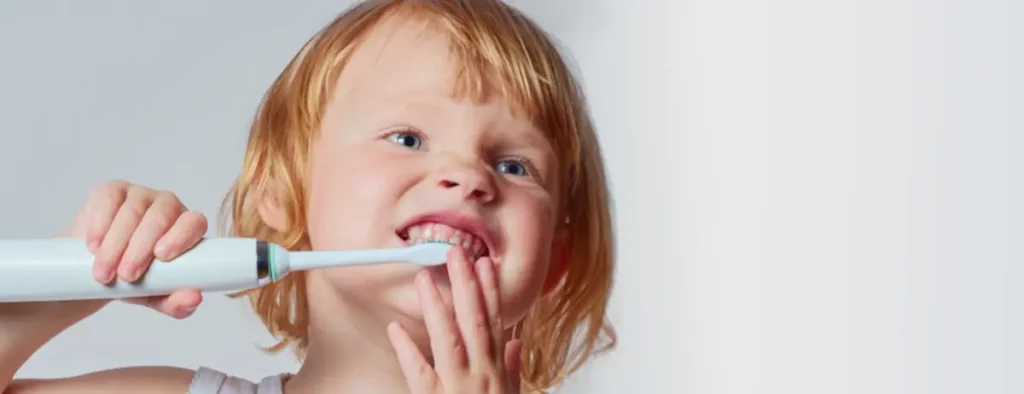
Traditional and electric, with natural bristles and synthetic bristles, bright and neutral – the range of children’s toothbrushes is rich in variety. It is sometimes difficult to make a choice, because this hygienic accessory should effectively clean your teeth, not cause discomfort, help to consolidate hygiene skills, and at the same time please the owner. It is necessary to approach the solution of this issue very responsibly.
Why? Let’s figure it out.
Guidelines for choosing a toothbrush
Manufacturers of toothbrushes for children, as a rule, pay special attention to design, decorating them with images of favorite cartoon characters. Of course, aesthetics in this matter is important, as it helps to instill interest in the process of brushing your teeth, but when choosing a brush, you must first of all focus on its technical characteristics.
When buying a toothbrush for young children, dentists recommend considering several important factors:
- Suitable for age: do not forget to look at the label on the packaging.
- The degree of bristle stiffness: as new teeth appear, the diet changes, the stiffness of the brush should be increased.
- The composition and size of the bristles: for children, it is preferable to choose brushes with synthetic or silicone bristles. The length of the villi for children with a milk bite can be the same, and brushes with different lengths of bristles are selected for cleaning permanent teeth.
- Size: the length of the working part should not exceed the size of two or three teeth of the baby, that is, it is approximately 2 cm.
A properly selected toothbrush will provide the child with a comfortable process of brushing his teeth.
Differences between toothbrushes for children of different ages
There is an opinion among parents that it is necessary to start brushing teeth after they have completely erupted. It’s a delusion. Care must be organized already with the advent of the first tooth. For this purpose, you can use a silicone fingertip toothbrush. With its help, adults carry out both a hygienic procedure and gum massage, which is especially important during teething. These devices can be used until the child tries to brush his teeth himself (2-2.5 years).
Of course, at this age, kids are unlikely to be able to properly clean their teeth on their own, and parents will have to intervene in the process, but it is necessary to accustom them to this procedure as early as possible. Instilled at an early age, a healthy habit of caring for the oral cavity will keep the child’s teeth healthy and the nervous system of adults stable.
The choice of the first toothbrush for a baby should be approached responsibly: its head should be small, the handle should be comfortable, and the bristles should be soft, rounded and polished. Such a brush will clean your teeth well and at the same time does not injure children’s gums. An important aspect of the choice is the appearance of the brush: if the child likes it, you will not have to be reminded to use it in the morning and evening.
When choosing a toothbrush for a child of 5-8 years old, you should pay attention to the fact that its head is structurally adapted for cleaning the teeth of the milk and permanent bite, since the change of teeth already begins in the oral cavity at this age and the first permanent teeth appear. The brush handle can be thinner than baby brushes, and the bristles are medium hard. The presence of a favorite cartoon character in the brush design will be a good motivation for a child to brush their teeth daily.
According to dentists, children’s electric toothbrushes can be used from 6-8 years old, as they are convenient to use and can turn the process of brushing your teeth from a boring procedure into an exciting experience. It is recommended to alternate it with a regular brush to avoid damaging the enamel of the teeth. Do not use an electric toothbrush in the presence of high abrasion of enamel, wedge-shaped defects, inflammation of the gums and tartar.
Children six years of age and older usually fully master the necessary oral hygiene skills, but from time to time adults are advised to monitor how well they perform this procedure.
How to care for a child’s toothbrush
After each procedure, the brush should be rinsed with running water and left with the bristles up in the open. To avoid getting oral germs from other family members, store children’s toothbrushes separately from others. The brush needs to be replaced every two to three months: usually by this time the bristles are already disheveled. But if the child has suffered an infectious disease, you should not wait for the next term, but change the brush immediately after recovery.
Choosing a toothbrush for a child, you not only take care of the health of his teeth, but also instill in him the right hygiene habits for life.
